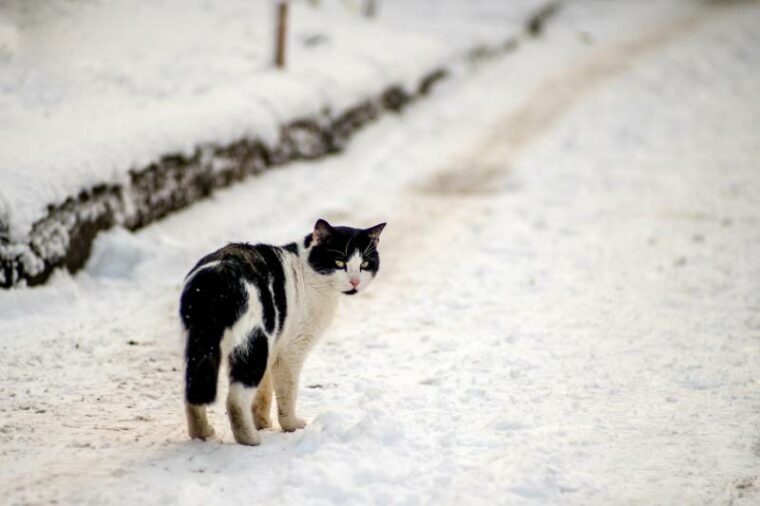
Click to Skip Ahead
Many people may think that because cats have a thick fur coat, like to hunt small prey, and have wild ancestors, they are fine to be outside in colder weather. And while there are numerous outdoor risks to consider, some might wonder, “How cold is too cold?” The truth is, there isn’t much in the way of current scientific studies to answer this specific question, but the American Veterinary Medical Association (AVMA) has recommended that “no pet should be left outside for long periods in below-freezing weather.” 1
In this article, we’ll explore more about cold weather and our feline friends as well as tips to keep your cat safe and mitigate risk regarding the cold weather.
Factors That Make a Difference
While commonly repeated veterinary advice may say that anything below “X” degrees or “colder than light jacket weather” is too cold for cats, the truth is that because each cat is an individual, even temperatures above freezing may pose a risk to some cats. The AVMA has recommended that cats should ideally be kept in the 50–80 degrees Fahrenheit (10–26.6 degrees Celsius) range with the humidity at 30%–70% 2. While this describes optimal conditions, one way to look at it is that the colder the temperature, the higher the risk to your cat. And while cats can be resourceful, even they have their own limits.
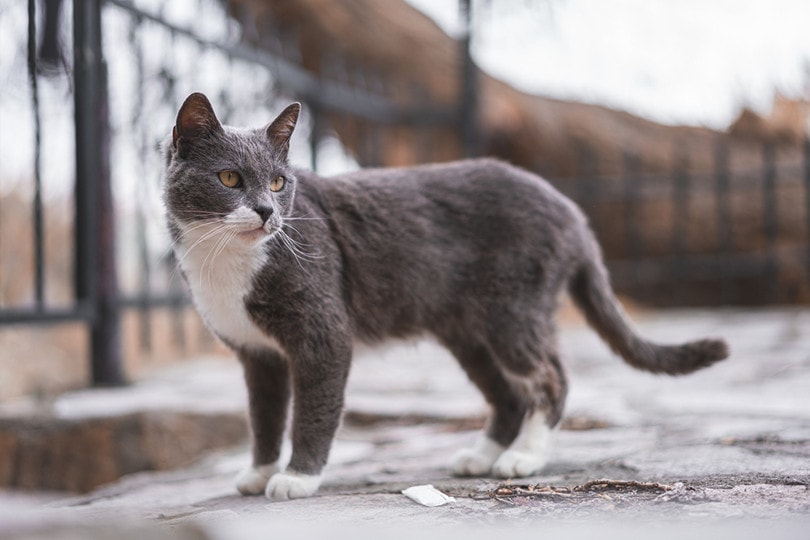
Hypothermia In Cats
Hypothermia, where the body has a lower-than-normal body temperature, can occur in cats just like people! While normal temperatures for a cat can fluctuate, often the veterinary world will use around 99–102.5 degrees Fahrenheit as a rough guideline for a “normal” feline temperature. Mild, moderate, and severe hypothermia would be defined as follows:
A cat with hypothermia needs immediate treatment to return their body temperature to a normal range. To help them get to this point, veterinarians would provide nursing care such as external warming surfaces (blankets, heating pads, warm bath, forced warm air) while doing their best to warm appropriately so as not to cause further problems such as iatrogenic burns or cause cardiac problems. In addition, an appropriate diet, warmed intravenous (IV) fluids, warmed oxygen, and other more intensive warming options could also be implemented.
Frostbite in Cats
Frostbite is where the freezing of tissues on the body (eg: skin, ear tips, toes) occurs and can also happen in cats! Because freezing occurs more rapidly at colder temperatures, the colder the weather, the more likely frostbite is to occur. This can especially be true if the cat is not well acclimated or is in wet and windy cold conditions. For regions of the body that are not as well-insulated, such as the tips of the ears, the feet, or the tail, there is an increased risk of frostbite.
If frostbitten, these areas would appear pale, reddened, or swollen (or a combination), and the affected cat is thought to feel numb or painful in those areas. In more serious cases, the skin may die and slough off. Quickly and gently warming the affected area(s) and providing supportive care thereafter would be required for the healing process, but in severe cases, amputation may be needed.
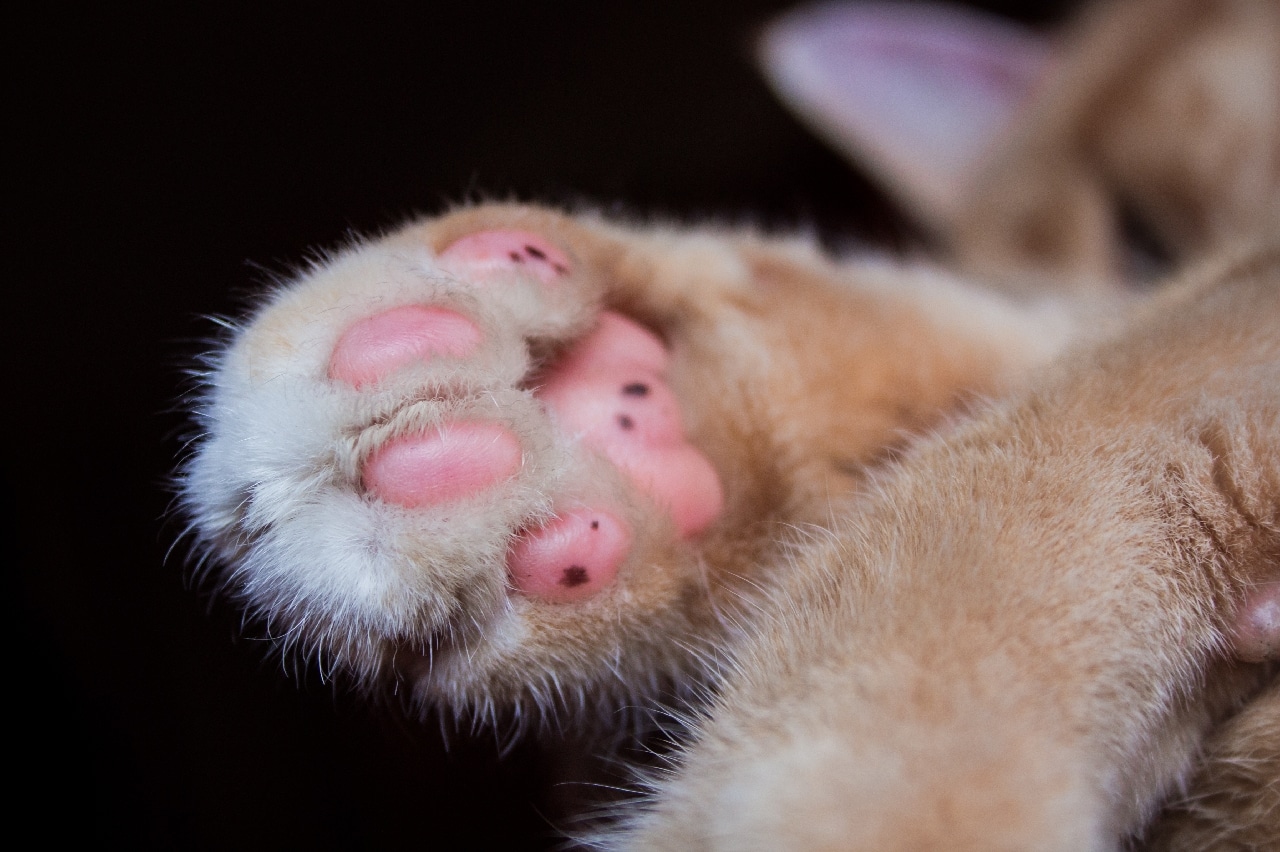
Cold Weather Safety for Cats
So, if your cat is going to be or accidentally gets outside during cold weather, what are some things you can do to help them be more likely to stay safe?
1. Provide respite from the weather.
Simply keeping a cat indoors is the easiest way to do this but providing a cat-flap door may be an alternative as well if a cat is accustomed to going in and out. If keeping the cat indoors completely is not an option, providing an outdoor shelter with bedding that protects your cat from the elements is essential. These can be purchased or even constructed rather inexpensively and would be a great choice to help provide extra comfort, warmth, and dryness for a cat that is outside.
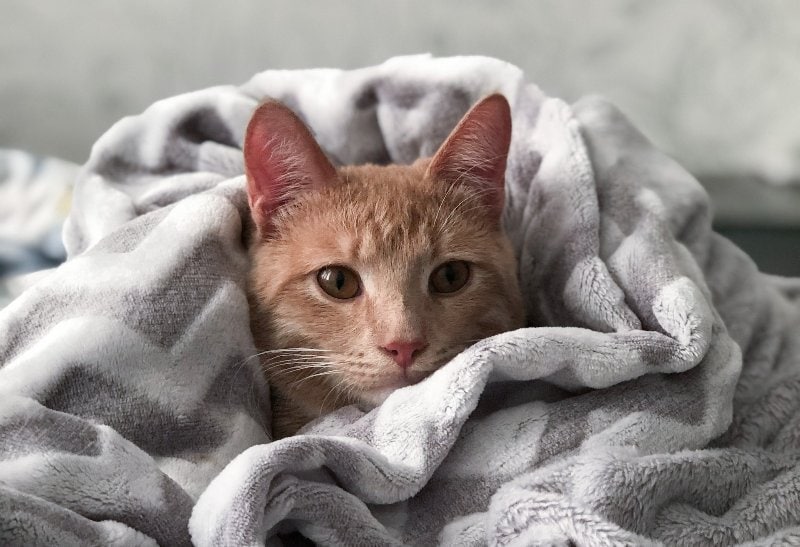
2. Access to food and water.
Cats may need more calories in colder weather and it’s also imperative that their water not be frozen. There are even heated water bowls you can buy for animals to be used outside!
3. Check under car hoods.
In cool or cold weather, car engines can be a warmer place for cats to curl up in, but this practice has notoriously resulted in severe injury and even death for many felines. Before starting a car, it’s recommended that you check under the car hood, bang on the hood a couple of times, and/or honk the horn to arouse a sleeping cat that may be staying warm on the engine before starting your car.

4. Common cold weather poisonings.
Antifreeze, which has a sweet taste, even in very small amounts can be very deadly to cats (and other animals). If suspected or actual ingestion has occurred, this is an emergency, and you should seek immediate veterinary care. Some preventative measures include using nontoxic propylene glycol instead of ethylene glycol products, keeping any containers closed and out of reach, and cleaning up any spills immediately and completely. Some other common winter items such as de-icers and rock salt ingestion also have the potential to make your cat sick, so be sure to store these products securely as well.
5. Identification options.
It is important to put a collar with the proper contact information on your cat, and having your cat microchipped is an additional layer of insurance. Use cat-safe collars, which stretch and/or contain a breakaway clasp, in the event the cat gets caught on something. Even if a collar is broken or torn off, if your cat is found and brought into a shelter or veterinary clinic, a microchip can immediately notify the finders of your contact information.
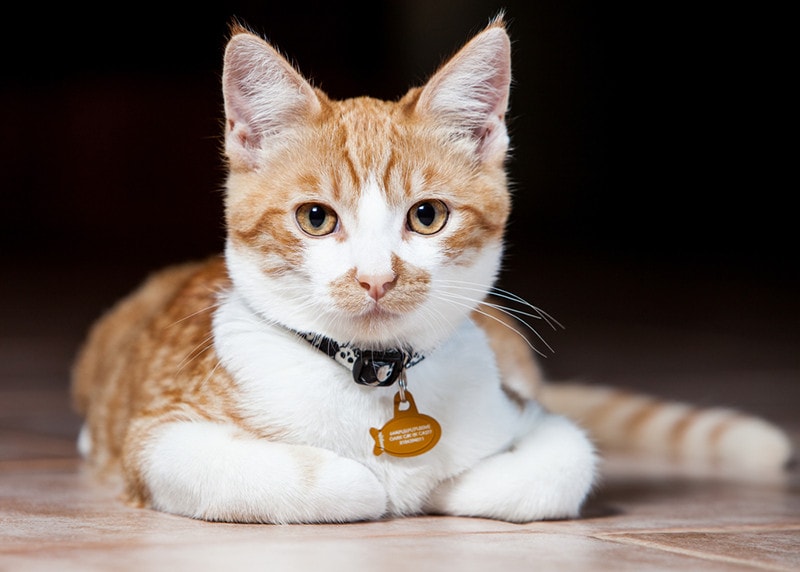
Conclusion
While there are no currently known studies that indicate exactly “how cold is too cold” when it comes to letting your cat outside, there are recommendations made by the American Veterinary Medical Association and others to help your cat be more likely to stay safe from colder weather. While each cat’s individual size, age, medical conditions, and prior experience will inform how well it can handle cold temperatures, keep in mind that the colder it is, the greater the health risks your cat will face.
Featured Image Credit: MaoriMurr, Shutterstock








